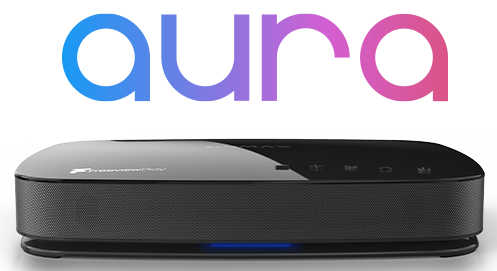I've been using manual re-tunes since I had major problems a while back with lots of recordings failing.
The only reason I tried an automatic re-tune this time was because of the missing stations.
When I said above that the stations were missing, what I meant was that, after the re-tune, those stations didn't appear in the complete station list.
I think I'll stick with the automatically tuned stations this time - unless I start to get problems.
I'll try going back to manual next time when I'll also try repeatedly tuning each channel until I get something back from it. Maybe I'll get lucky.
Anyway, thanks for your help.
My Humax Forum » Freeview HD » HDR 1800T, 2000T
Where can I find a reliable manual channel search list?
(18 posts)-
| Sun 20 Jan 2019 9:34:23 #11 |
-
One of my recordings failed miserably last night - CBS Reality+1, station 67 on channel 33T2, recorded only 4 minutes of a 60 minute programme - so I decided to re-tune manually just in case it made anything better (probably not but it's worth a try).
If anyone is interested, the results/stats of my re-tune - tuned in rising numerical channel number order, just for the heck of it - were as follows:
CH TV Rad Sig Qual
33T2 13 1 50% 10-50% (variable)
34T2 12 0 51% 10-50% (variable)
49T2 7 0 72% 100%
50T 40 3 67% 100%
54T 13 0 70% 100%
55T 22 11 69% 100%
56T 6 0 49% 100%
58T 9 15 71% 100%
59T 21 2 70% 100%
(Where: TV = No. of TV stations tuned, Rad = No. of Radio stations tuned, Sig = Signal Strength, Qual = Signal Quality. '(variable)' means that the signal quality was variable between both values.)In total, 143 TV stations and 32 radio stations were tuned.
A lot of useful +1 stations - Pick+1, Quest Red+1, Yesterday+1, etc. - are now in my 'flaky' 33T2 and 34T2 channels so I guess I'll be getting my (un?)fair share of missed recordings in the future. I'll just have to keep an eye on things I suppose.
Not sure if this will be useful to anyone but it's here just in case.| Mon 21 Jan 2019 13:34:03 #12 | -
When you use the digitaluk coverage checker does it say you should get good coverage on COM7HD and COM8HD (UHF 33, 34)? The hotel postcode I used is clearly not where you are, so when it shows "100" good coverage for them it might not be true where you are. The numbers make sense though. The power of 58/54/49 is 100kW, 50/59/55 50kW, 33/34 around 34kW and 56 - 5kW. Ignore the local mux (56) as this uses a more robust error correction.
I'm no expert on aerials, but it could be that your aerial is not suited to UHF channels 33 & 34. However, there are problems to come within the next year as all your UHF channels will change, and your replacements for 33/34 will be even lower power. "I guess I'll be getting my (un?)fair share of missed recordings in the future." Very possibly.| Mon 21 Jan 2019 19:35:33 #13 | -
The coverage with both COM7HD and COM8HD is Served 100 and Marginal 100 (whatever that means, I'm clearly no expert but those numbers sound good), in fact it's green 100's across the board. (We're less than 15 miles away from the transmitter with no major hills in the way.)
I have a feeling that the aerial is the same one that was fitted in the 80s/90s before digital terrestrial TV was 'a thing'.
If I'm reading the table correctly - not a certainty - the power of the COM channels - changing from 33 and 34 to 55 and 56 respectively in October - will go down to just over half of what they are now. That doesn't bode well. (Seems strange for the HD channels to go to even lower power when I would have thought they should need more but I don't really understand how all this works.)
Guess I might need to get someone with the right equipment to come round and see what can be done before then. Or I could just put up with it, depending on which stations I might 'lose'.
Anyway, many thanks for the extra information and the 'heads-up'. You've saved me a lot of head-scratching and hair-pulling.| Tue 22 Jan 2019 9:46:33 #14 | -
GarryP - 2 hours ago »
Guess I might need to get someone with the right equipment to come round and see what can be done before then.Before you do that, try ringing digitaluk and see what they say about the observation that COM7 and COM8 have a reasonable signal strength but very poor signal quality.
| Tue 22 Jan 2019 12:24:38 #15 | -
I've just had a look at the "Consumer View" for my area on digitaluk.co.uk and noticed that all of the stations that were tuned in via channel 33T2 have a little "aerial" icon next to them which denotes that a "wideband aerial" may be required to get those stations.
Looking across the table to the next few re-tune events shows more and more stations having that requirement until 2020 when the vast majority of channels have this little icon next to them.
I had a look for images of wideband aerials and ours doesn't look like any of them. They, generally, show a wide-delta-shaped 'back bit' (whatever it's called) while ours is the sort of basic thing you would see in the "Coronation Street" title sequence from the 80s. Actually, there are three aerials stuck to the chimney so I'm not sure which one is being used, but they are all very old.| Tue 22 Jan 2019 13:18:11 #16 | -
GarryP - 1 day ago »
Seems strange for the HD channels to go to even lower power when I would have thought they should need more but I don't really understand how all this worksTrouble is COM7 and COM8 were only supposed to be temporary multiplexes. I don't think the original plan had the multiplexes moving to UHF 55 & 56 as a single frequency network throughout (part) of the country. It took a long time for one of the multiplexes (COM8?) to get anything other than QVC on it. Suddenly, they became more popular with the broadcasters (cheaper bandwidth than the other muxes?). I think Ofcom has decided to hurry up the 700MHz clearance and this might well be the reason for the COM7 & COM8 movement and power changes. What happens when these multiplexes are switched off? Who knows!
| Wed 23 Jan 2019 10:26:48 #17 | -
As http://www.digitaluk.co.uk/operations/multiplexes says, "COM7 and COM8 are interim multiplexes..." so it sounds like they are still "temporary" but it really depends on what they mean by "interim".
I notice that they - COM7 and COM8, along with BBCB - have the highest useful bitrate, which might be why they're used for the HD stations, but that's outside my realm of expertise to have any real opinion on.
Ah well, we'll see what happens sometime in the next few months when we get someone round to look at the aerial (when the weather is a bit nicer for going up on a roof).| Wed 23 Jan 2019 12:43:01 #18 |
Reply
You must log in to post.


